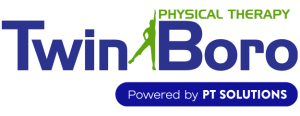Background & Etiology
There are 28 bones in the foot, and over 30 joints. The bones in the foot include the phalanges, the metatarsals, three cuneiform bones, the cuboid bone and the navicular bone, which make up the arch of the foot, the calcaneus (heel bone), and the talus bone at the ankle.
Fractures
A fracture is defined as a partial or complete crack in a bone. Fractures can be minor with little or no displacement of the bone, or more severe with complete displacement of the two ends of the bone, which requires surgery to realign. There are closed fractures that do not break the skin, and open fractures that do break the skin (also called compound fractures.) A foot fracture can be an injury to the phalanges (toes), metatarsals, cuneiform bones, calcaneus, or talus.
Calcaneus Fractures
The calcaneus is also referred to as the heel bone, which is the largest bone in the foot. Calcaneus fractures can be severe injuries, occurring from a fall or traumatic accident. The treatment for a calcaneus fracture will vary based on the extent of the injury.
The most common cause of a fracture is trauma. Trauma can result from incidents like falls or participation in sports or other high impact activities.
- Trauma such as motor vehicle accidents, falls, or crush injuries
- Repetitive stress injury such as running, that produces a stress fracture
- Sporting activities
- Metabolic disorders
- Osteoporosis
Fractures are acute injuries (occur suddenly) therefore symptoms can often be noticed immediately following injury.
- Sudden, sharp pain in the foot
- Swelling and tenderness at the site of injury
- Bruising
- Visible deformity of the bones in the foot
- Inability to move the ankle or foot without pain
- Decreased ability to walk and or weight bear on the effected leg
In the event that an individual suspects they may have sustained a calcaneus fracture, a radiographic evaluation (X-Ray) will be essential to a proper diagnosis. A bone can fracture in different ways, causing complications or secondary conditions that your physician will look for. Conditions that can be related to a foot fracture include:
- Comminuted fracture: a bone that is broken in several pieces
- Dislocation: a bone that is not properly aligned in the correct joint
- Malunion: when the bone heals in the improper position
- Nonunion: when the ends of the broken bone do not fuse together properly
- Growth plate injury: in children, areas at the ends of bones (near the joint) are responsible for growing the bone as the child develops.
The most common course of treatment for a calcaneus fracture is realignment (referred to as reducing the fracture) and casting or splinting to immobilize the joint, and give the bones time to heal. For more severe fractures, surgery may be needed to realign the bones properly. Pins, screws, or wires may be used to hold the bones properly in place. How much movement should be restricted following the fracture will depend on the severity of the break.
Once cleared by the physician, a physical therapy program should be initiated to reverse the effects of immobilization and restore foot motion. In more involved fractures recovery can take more time. Formal therapy and compliance with an extensive home program is essential to restoring function of the foot.
Post surgery fracture immobilization can have detrimental effects that can be improved through physical therapy. These effects include:
- Joint articular cartilage softening
- Shortening and atrophy of musculotendinous units
- Decreased circulation
- Loss of active and passive motion
- Weakness
- Decreased ability to bear weight
- Swelling
Goals for physical therapy post-fracture immobilization of the foot are optimal loading and restoration of normal tissue relationships to improve motion, strength, reduce pain, decrease swelling and increase the ability to perform functional activities of daily living.
- Manual Therapeutic Technique (MTT): hands on care including soft tissue massage, and joint mobilization by a physical therapist to modulate pain and reduce any soft tissue or tendon irritation and restore normal joint mechanics and range of motion.
- Therapeutic Exercises (TE) including exercises to improve strength and performance of the foot bones and surrounding muscles.
- Neuromuscular Reeducation (NMR) to restore stability, begin retraining the lower extremity, improve proximal joint stability and improve movement technique and mechanics (for example: jumping, running, reduce gait deviations etc) in use of the involved lower extremity in daily activities.
- Modalities that can include the use of ultrasound, electrical stimulation, ice, cold and laser to decrease pain, improve mobility and reduce inflammation of the foot and surrounding muscles and tendons.
- Home program development should include strengthening, stretching and stabilization exercises as well as instructions to help the person perform daily tasks and advance to the next functional level.
Most fractures can be diagnosed with X-Ray studies and when necessary a CAT Scan. The use of pain medications, immobilization, rest and ice are the first line of treatment. Surgical intervention may be required in more severe fractures or when the injury affects the integrity of the joint.
Prognosis
Rate of recovery and the prognosis from a calcaneus fracture will depend on a number of factors:
- Severity – Minor fractures do well with immobilization and physical therapy, while fractures that are more severe and require surgery or effect joint integrity take longer to heal. Patients may have residual motion and strength deficits.
- Age- Younger individuals recover faster and are less likely to have residual deficits. Younger individuals heal quicker, have better circulation, are stronger and usually have better pre-injury tissue integrity.
- Prior activity level plays an important role in post-injury recovery. Those who exercise regularly are stronger and more flexible, and generally have an easier and more complete recovery.
- Compliance- Patients that are committed to their rehabilitation program and are compliant with their home program are more successful in returning to full function.

